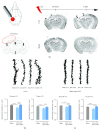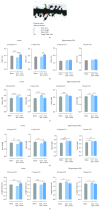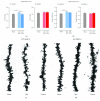MMP-9 Contributes to Dendritic Spine Remodeling Following Traumatic Brain Injury
- PMID: 31198417
- PMCID: PMC6526556
- DOI: 10.1155/2019/3259295
MMP-9 Contributes to Dendritic Spine Remodeling Following Traumatic Brain Injury
Abstract
Traumatic brain injury (TBI) occurs when a blow to the head causes brain damage. Apart from physical trauma, it causes a wide range of cognitive, behavioral, and emotional deficits including impairments in learning and memory. On neuronal level, TBI may lead to circuitry remodeling and in effect imbalance between excitatory and inhibitory neurotransmissions. Such change in brain homeostasis may often lead to brain disorders. The basic units of neuronal connectivity are dendritic spines that are tiny protrusions forming synapses between two cells in a network. Spines are dynamic structures that undergo morphological transformation throughout life. Their shape is strictly related to an on/off state of synapse and the strength of synaptic transmission. Matrix metalloproteinase-9 (MMP-9) is an extrasynaptically operating enzyme that plays a role in spine remodeling and has been reported to be activated upon TBI. The aim of the present study was to evaluate the influence of MMP-9 on dendritic spine density and morphology following controlled cortical impact (CCI) as animal model of TBI. We examined spine density and dendritic spine shape in the cerebral cortex and the hippocampus. CCI caused a marked decrease in spine density as well as spine shrinkage in the cerebral cortex ipsilateral to the injury, when compared to sham animals and contralateral side both 1 day and 1 week after the insult. Decreased spine density was also observed in the dentate gyrus of the hippocampus; however, in contrast to the cerebral cortex, spines in the DG became more filopodia-like. In mice lacking MMP-9, no effects of TBI on spine density and morphology were observed.
Figures





References
-
- Reeves T. M., Prins M. L., Zhu J. P., Povlishock J. T., Phillips L. L. Matrix metalloproteinase inhibition alters functional and structural correlates of deafferentation-induced sprouting in the dentate gyrus. The Journal of Neuroscience. 2003;23(32):10182–10189. doi: 10.1523/JNEUROSCI.23-32-10182.2003. - DOI - PMC - PubMed
Publication types
MeSH terms
Substances
LinkOut - more resources
Full Text Sources
Medical
Miscellaneous

